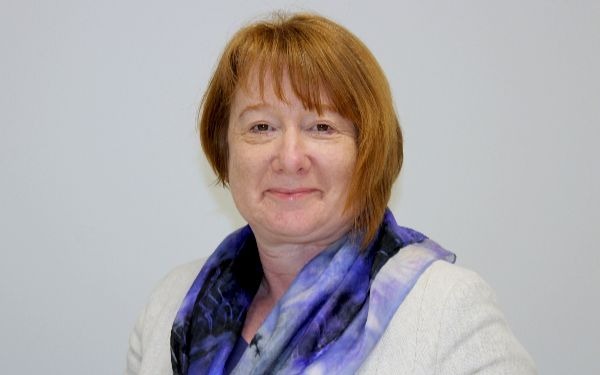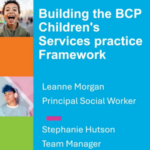
Ofsted has sharpened its focus on stability for children in care in its judgments of social care providers, particularly children’s homes and independent fostering agencies.
The changes to its social care common inspection framework (SCCIF) are a response to concerns that some providers are rejecting referrals for children with complex needs due to concerns about the impact on their Ofsted ratings.
As a result, those children are being placed far from family or friends, experiencing multiple moves or ending up in unsuitable or unregistered accommodation.
Ratings concerns ‘driving rejection of children with complex needs’
Research for the regulator published last year found that 60% of local authorities believed these concerns were often or always a reason that homes rejected referrals for children with complex needs.
By contrast, 60% of children’s home providers said concerns about the impact of a child with complex needs on their rating were never or rarely a reason for rejecting a referral.
At the time of the research’s publication, Ofsted said there was almost no difference between SCCIF grades for homes that care for children with complex needs and those for all homes, with about four in five judged good or outstanding.
This reflected the fact that the SCCIF “was designed to focus on children’s progress and experiences, as opposed to their outcomes”, meaning inspectors should take account of children’s starting points.
However, in a blog post published last month, Ofsted’s national director for social care, Yvette Stanley, said that the perception persisted among some homes that taking on a child with more complex needs would hurt their rating.
Greater focus on stability in inspection framework
Ofsted said the changes, enacted last week, would put a sharper focus on:
- how providers promote and sustain stability for children, including those with high needs;
- how providers balance the needs of a child requiring placement with those already living in the setting;
- the timeliness of a provider’s work to prepare children for their next move;
- how accurately placement decisions reflect a provider’s statement of purpose.
“We want providers to be risk-aware, not risk-averse,” said Stanley.
“I hope these changes send a clear message that we will recognise providers who step up to support our children with complex needs, and who stick with them though the most difficult times.”





 Bournemouth, Christchurch and Poole
Bournemouth, Christchurch and Poole  Hampshire County Council
Hampshire County Council  Oxfordshire County Council
Oxfordshire County Council  South Gloucestershire Council
South Gloucestershire Council  Wokingham Borough Council
Wokingham Borough Council  Harnessing social work values to shape your career pathway
Harnessing social work values to shape your career pathway  Webinar: building a practice framework with the influence of practitioner voice
Webinar: building a practice framework with the influence of practitioner voice  ‘They don’t have to retell their story’: building long-lasting relationships with children and young people
‘They don’t have to retell their story’: building long-lasting relationships with children and young people  Podcast: returning to social work after becoming a first-time parent
Podcast: returning to social work after becoming a first-time parent  How managers are inspiring social workers to progress in their careers
How managers are inspiring social workers to progress in their careers  Workforce Insights – showcasing a selection of the sector’s top recruiters
Workforce Insights – showcasing a selection of the sector’s top recruiters  Empowering people with Parkinson’s to lead fulfilling lives
Empowering people with Parkinson’s to lead fulfilling lives 

 Facebook
Facebook X
X LinkedIn
LinkedIn Instagram
Instagram
Cherry Picking 🍒 and Risk Determination are the bread and butter of spot contracts negotiation….
… it is afterall a sewn-in requirement that children are treated as lots to be bid for and against …
… the statutory reviewing process, and especially s16 secure reviews, are driven by such gaming …
… the absurdity is that there’s never been any freedom of contract, insider trade-offs are normal and the use of public procurement and competitive processes a complete bollix….
… ask the Competition and Mergers Commission for an update; the SOLACE and Senior Public Procurement Managers summit findings in May 2007 said pretty much the same almost two decades ago….
… why is learning so slow 🐌…
Hi,
I have been a Social worker for 8 years . 6 of in a Permanence team ( children in care).
It is the worst I have known. It’s as if people can pick and choose and inevitably choose less complex. Although, I’d say all out children have complex needs.
Where it particularly impacts is teenagers . It’s as if no one wants 15-17 yr olds !. Who are often our most vulnerable. And yes I believe it’s to do with the higher level of exploitation and how OFSTED inspect this being managed. It’s tough to deal with and I believe it is impacting residential settings.
I have also seen younger and younger young people entering residual settings. It used to be rare younger then 9 or 10 years, now it’s common place. Which means they are even more vulnerable and missing a family setting in formative years.
Out young people are not moving on to fostering families as quickly as they could, due to shortage of foster carers. I also believe foster cares are ill prepared for complex trauma and behaviours. Limited support frome fostering service means instability quicker to arise.
Adding to the instability of the systemic issue that the foster carers don’t feel they should support family time / contact. And SSW often unconsciously colluding with this instead of making and encouraging. Missed opportunities to share research on why it’s better for young people to see positive interaction between foster cares and family.
There is also many young people that could move into a SGO arrangement but again fostering leave children in long term fostering arrangements.
I don’t believe the situation will change h less there is a systemic approach to entry point and outcomes. Also, a National push for more foster carers ( worse since COVID which broke many down) .
I believe foster carers and agencies need to have more understanding around what created stability , or it will often break down when a child reaches teenage stage. When parents who have felt left out and powerless come to undermine via social media etc .
I believe stability in any placement works well when all adults supporting work together rather than in silos. Too often I am finding young people allowed to ‘ rot’ in bedrooms declining education .
With lack of choice through limited placements I believe this will continue. It needs investment and through Local Authorities being supported to have the resources and less IFA who are charging the earth with often little delivery. Knowing they can pick and choose with all the demand.
I have young people often being offered placements hundreds of miles from their families and then social care having to pick up the financial cost of managing transport.
I have had residential interview young people as if they are standing a college placement ! And saying no can’t meet need when inevitably the young person doesn’t want to move miles gone home and so sabotaged the meeting.
Placements often breakdown also as services to support via CAMHS are reactive and often too late with long waiting lists . Resulting even with the best intentions placement becoming unstable,
There just seems to be lack of choice, lack of experience and resources, lack or commitment. Resulting in notices being given.
I hope it changes as out young people deserve much more.
I think that Ofsted’s updated guidance is indeed a welcome sign and there has long been the need to embrace the reality of the needs of the more complex young people in residential care.
The more cynical side of me has considered that the new guidance is a reaction to the dire situation we have found ourselves in with a host of young people on a carousel of propped up placements. Placements such as ill-fitting family, Kinship, foster care, E-Beds, Air B&Bs and even hotels.
In response a newer trend has emerged for placing young people in unregulated and more concerning and at odds with the law, unregistered accommodation with a proviso that a DoLs is put into place to ‘sanction’ the decision.
There are just not enough residential children’s homes willing to take the significant risk of providing a bed for a more complex young person. Ofsted has signalled that the word ‘complex’ does little to describe what a young person’s needs are or indeed, how they may behave, which most of us would agree with.
However, for the provider, ‘complex’ often becomes a euphemism for behaviours that are likely to place that young person, other young people and the staff at significant risk. As we know ‘complex’ often includes, multiple placement breakdowns, missing self-harm, and serious violence.
The referral coordinator’s will be only too aware that out of the 30-40 referrals received a day, 70-80% are sadly likely to fall into this ‘complex’ category. We see the same young people appearing most days, many of them for many months.
This is of course a concerning indictment of the current landscape, and I have the same sadness and concern as other providers and stakeholders for this terrible situation.
Ofsted’s guidance considers resilience, persevering with the harder to place young people and not giving up, which is of course a reasonable and an appropriate approach. We do not need any more research to tell us that placement breakdown harms young people.
It is of course true and understandable that providers are often reluctant to take more complex young people. Indeed, one should consider that a provider is making a decision that could place, this child at risk, other young people at risk, the staff and the community at risk.
It would be remiss to suggest that providers were unconcerned with Ofsted’s view when that provider makes the decision to take the placement, particularly if risks result in events and the placement reluctantly ends unplanned or causes harm.
It will be interesting to see how and indeed if Ofsted’s more sanguine approach to placing complex young people is reflected in the inspectors judgement on the day.
As an ex-Ofsted inspector, I am most aware that it is ultimately incumbent upon the inspector on the day to feel comfortable grading the service as Good or Outstanding, all the time there are young people that are more likely than not to engage in significant risks.
No amount of guidance is going to satisfy even the most seasoned inspector, that awarding a Good or better judgment is not going to be under the most intense scrutiny should there be a tragic outcome.
This is not unreasonable, but regardless weighs heavy upon the manager, who maybe more inclined to take a not so difficult or complex young person instead.
Providers that I speak with are most aware that when a provider accommodates a more difficult to place young person, they become the focus of the inspection.
The inspector will become laser focused on this young person, their impact assessment, their historic behaviours, the ability and training of the staff and the impact on the other placed young people. Young people the inspector speaks with are also likely to express ambivalence to the inspector towards the recently placed more complex young person, which the inspector needs to understand.
We will have to see if and how the sector embraces this reviewed approach.
If Ofsted is asking providers and their staff to take on greater levels of the risks with more complex young people, then Ofsted needs to adapt their approach.
Ofsted needs manage the risks in their regulatory role and decisions and demonstrate confidence in their support of the bolder and more courageous provider if they are to take on these more challenging young people.